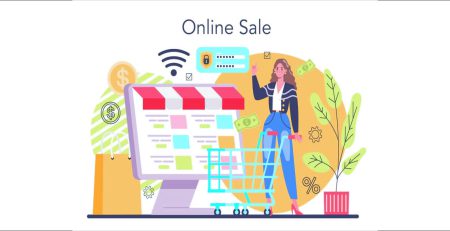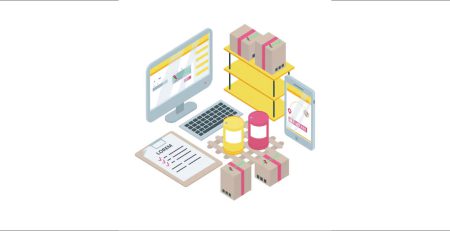What’s the Difference Between Same-Day Delivery and Next-Day Delivery?
Arrived EZ2024-02-16T18:56:20+00:00Demand for fast and reliable delivery services has become very important for both businesses and customers in today’s busy world. Both same-day delivery and next-day delivery have become popular choices because they promise fast shipping of goods. But knowing the small differences between these services is important for both companies and customers who want to find the best delivery options.
The Need to Go Fast:
When talking about e-commerce, “The Need for Speed” refers to how customers are expecting faster and more efficient delivery of goods. In today’s competitive business world, getting things to customers on time has become a key factor in keeping customers happy and coming back. In order to keep up with this demand, online stores have had to add faster delivery options like same-day and next-day delivery.
Same-day and next-day delivery services are two ways to directly meet the need for speed in the delivery process. But even though both of these services have the same goal of quickly fulfilling orders, they work in ways that are different from each other.
As the name suggests, same-day delivery means getting a product to a customer the same day they place their order. For this to work, the transportation system needs to be very streamlined and effective. Warehouses need to be placed in a way that minimizes transit times, and goods need to be picked, packed, and sent out quickly. This requires advanced order processing systems.
On the other hand, next-day delivery gives you a little more time, but it still stresses speedy delivery by making sure that the items you order get to the customer the very next day after you place your order. This gives you a little more freedom in planning your operations than same-day delivery, but you still need a strong and quick supply chain to meet customer needs.
To keep operations running smoothly, both services need to be able to integrate complex technologies, track packages in real time, and work together with dependable delivery services. It can be hard for e-commerce companies to find the right balance between how fast they can send items and how cheaply they can do their logistics. The “Need for Speed” in e-commerce underscores the crucial role that swift deliveries play in meeting customer expectations and gaining a competitive edge. Same-day and next-day delivery services represent distinct approaches to achieving this goal, each with its operational nuances and challenges, as e-commerce businesses strive to find the right balance between speed, cost, and customer satisfaction.

Same-Day Delivery: A Lightning-Fast Solution
Same-day delivery is a logistical service that fulfils its promise by ensuring that orders placed by customers before a designated cut-off time are delivered to their doorstep on the very same day. This expedited shipping option is designed to cater to time-sensitive items or urgent requirements, offering customers nearly instant gratification. It’s an attractive feature for those who prioritize speed and immediacy in their shopping experience.
The success of same-day delivery relies heavily on the establishment of a well-optimized logistics infrastructure and a strategically located distribution network. Here’s a breakdown of the key components that make same-day delivery a lightning-fast solution:
Logistics Infrastructure: Same-day delivery demands a highly efficient and streamlined logistics infrastructure. This includes sophisticated order processing systems, inventory management tools, and advanced tracking mechanisms. Automation plays a crucial role in expediting the order fulfilment process, ensuring that orders are processed rapidly and accurately.
Distribution Centres: To achieve swift delivery, companies need strategically located distribution centres or warehouses. These centres act as hubs where products are stored and sorted. The proximity of these centres to major population centres or key delivery zones is essential to reduce transit times and facilitate quick dispatch.
Advanced Technology: Integration of advanced technologies, such as route optimization algorithms and real-time tracking systems, is vital for same-day delivery success. These technologies help in planning the most efficient delivery routes, minimizing delays, and providing customers with accurate delivery time estimates.
Inventory Management: An effective inventory management system is crucial for same-day delivery. It ensures that products are readily available for quick dispatch. Real-time inventory tracking helps prevent stock outs and enables businesses to fulfil orders promptly.
Last-Mile Delivery Solutions: The last-mile delivery, referring to the final leg of the delivery process from the distribution centre to the customer’s location, is a critical factor. Companies often employ various last-mile delivery solutions, including local courier services, crowdsourced delivery, or even innovative approaches like drone or autonomous vehicle deliveries, to ensure the fastest and most reliable service.
Strategic Partnerships: Collaborations with local delivery services or third-party logistics providers can enhance the reach and efficiency of the delivery network. Partnerships allow businesses to tap into existing delivery expertise and infrastructure without the need for substantial investments.
Achieving same-day delivery is a multifaceted challenge that requires a combination of advanced technology, efficient logistics, strategic planning, and effective partnerships. When executed successfully, same-day delivery can be a game-changer for businesses looking to meet the growing demand for rapid and convenient order fulfilment in today’s fast-paced consumer landscape.
Next-Day Delivery: The Gold Standard of Convenience
Next-day delivery is considered the gold standard of convenience in the realm of e-commerce and retail logistics. Unlike standard shipping options that may take several days or even weeks to deliver orders, next-day delivery promises that customers will receive their purchases within just one day after placing an order.
This expedited shipping option has gained widespread popularity due to its ability to provide a swift and reliable service. Customers today often value speed and efficiency in the delivery of their goods, and next-day delivery caters to this demand. The immediacy of receiving orders within 24 hours adds a significant level of convenience for consumers who prioritize quick turnaround times.
From a business perspective, next-day delivery strikes a crucial balance between speed and operational feasibility. While same-day delivery may pose logistical challenges and increased costs, next-day delivery allows companies to optimize their supply chain and distribution networks more effectively. It provides a reasonable timeframe for processing and dispatching orders while ensuring that customers receive their packages promptly.
Efficient planning and route optimization are key components of next-day delivery. Businesses invest in advanced logistics systems and technologies to streamline their operations. By carefully planning and optimizing delivery routes, companies can minimize transit times, reduce transportation costs, and enhance overall efficiency in the delivery process.
The appeal of next-day delivery extends beyond just the speed of service; it encompasses the reliability and predictability of the entire logistics chain. Customers appreciate knowing exactly when to expect their deliveries, allowing them to plan their schedules accordingly. This predictability contributes to a positive customer experience, fostering trust and satisfaction with the brand.
Next-day delivery has become the gold standard of convenience because it provides a timely and reliable option for both businesses and consumers. It balances the need for speed with the practical considerations of logistics, allowing companies to offer a high-quality service while maintaining operational efficiency. As a result, next-day delivery has become a competitive advantage for businesses seeking to meet the demands of today’s fast-paced and convenience-driven market.
Key Differences:
Time Sensitivity:
Time sensitivity in the context of delivery services refers to the urgency and importance of delivering items within a specific timeframe. The points you’ve mentioned highlight different aspects of time sensitivity in the delivery process:
Same-Day Delivery:
Ideal for Urgent Items: This option is suitable for items that require immediate delivery due to their urgency or time-sensitive nature. Examples include perishable goods, emergency supplies, or last-minute gifts.
Speed is Crucial: Same-day delivery focuses on minimizing the time between the order placement and the actual delivery. This requires efficient logistics and distribution systems to meet customer expectations.
Next-Day Delivery:
Balanced Speed and Feasibility: Next-day delivery strikes a balance between speed and operational feasibility. It provides a quicker option than standard delivery while allowing for more efficient planning and coordination of logistics.
Convenience and Timeliness: This option is convenient for customers who need their items promptly but may not require immediate delivery. It caters to a broader range of time-sensitive needs without putting excessive pressure on operational processes.
Operational Challenges:
Logistical Complexity:
Meeting tight delivery timelines poses challenges in terms of the complexity of the logistical operations. Coordinating the movement of goods, managing inventory, and ensuring timely pickups and drop-offs require sophisticated systems and well-established processes.
Cost Implications: Faster delivery often comes with higher operational costs. This includes expenses related to transportation, warehousing, and labour. Balancing the need for speed with cost-effectiveness is a constant challenge for delivery service providers.

Infrastructure and Technology:
Achieving timely deliveries relies on a robust infrastructure and advanced technology. Companies need efficient routing systems, real-time tracking, and accurate inventory management to overcome operational challenges.
Customer Expectations:
The demand for fast delivery has heightened customer expectations. Meeting these expectations consistently requires a responsive and adaptable supply chain. Failure to do so can lead to customer dissatisfaction and potential loss of business.
In summary, time sensitivity in delivery services involves finding the right balance between speed and operational feasibility to meet customer expectations while overcoming logistical challenges.
Let’s break down the points about same-day delivery and next-day delivery:
Same-Day Delivery:
Logistics Infrastructure:
Same-day delivery necessitates a robust logistics infrastructure. This includes a well-organized system for transporting goods from warehouses to the final destination within the same day.
Strategically located warehouses:
To achieve optimal efficiency, warehouses need to be strategically located. Placing warehouses in key geographic areas helps minimize transportation time, allowing for faster order processing and delivery.
Quick Turnaround:
The primary goal of same-day delivery is to fulfil orders within the same day they are placed. This requires an efficient process flow, from order processing to packaging and transportation.
Next-Day Delivery:
Streamlined Operations:
Next-day delivery offers a slightly extended timeframe compared to same-day delivery, allowing for more streamlined operations. This means there is a bit more flexibility in the order fulfillment process.
Order Fulfilment Timeframe:
With next-day delivery, the focus is on delivering orders by the following day. This provides businesses with a bit more time to process orders, prepare shipments, and coordinate deliveries, leading to smoother overall operations.
Reduced Urgency:
Unlike same-day delivery, next-day delivery doesn’t demand the same level of urgency. While it still requires efficiency, the timeline allows for a more organized and methodical approach to logistics.
Achieving same-day delivery requires an intricate and efficient logistics system, as well as strategically positioned warehouses to meet the tight timeframe. On the other hand, next-day delivery provides a more relaxed schedule, allowing for streamlined operations without the immediate urgency associated with same-day delivery. Both options reflect different levels of service that businesses can offer based on their logistical capabilities and customer expectations.
Cost Implications:
The cost implications of same-day delivery and next-day delivery can vary depending on several factors. Here are some considerations for both options:
Same-Day Delivery:
Expedited Shipping Costs: Same-day delivery requires faster shipping methods, such as express or courier services, which tend to be more expensive than standard shipping options.
Logistics and Labour Costs: Coordinating same-day delivery involves complex logistics and may require additional labour to ensure timely fulfilment. This can contribute to higher overall costs.
Distance and Location: The cost of same-day delivery can also be influenced by the distance between the warehouse or fulfilment centre and the delivery destination. Urban areas might have more affordable same-day options compared to remote locations.
Next-Day Delivery:
Standard Shipping with Faster Transit: Next-day delivery is often achieved through standard shipping services but with faster transit times. This typically incurs lower shipping costs compared to same-day delivery.
Efficient Routing and Planning: Since there is a longer time frame for next-day delivery, logistics providers can plan more efficiently, optimizing routes and reducing operational costs.
Volume Discounts: Businesses that regularly use next-day delivery services may negotiate volume discounts with shipping providers, helping to lower the overall cost per delivery.
Businesses may choose between same-day and next-day delivery based on factors such as the nature of the products, customer expectations, and budget considerations. While same-day delivery offers unparalleled speed, it comes at a higher cost. Next-day delivery, on the other hand, strikes a balance between speed and cost-effectiveness, making it a popular choice for many businesses and consumers.
It’s important for businesses to carefully evaluate the trade-offs between speed and cost, taking into account customer expectations, competitive pressures, and the impact on profit margins. Additionally, advancements in logistics technology and partnerships with reliable shipping providers can help mitigate costs associated with expedited delivery services.
Conclusion:
In the ongoing debate between same-day and next-day delivery, understanding the nuances is key to making informed decisions. Businesses need to assess their operational capabilities, customer expectations, and the nature of their products when choosing between these two options. Ultimately, the choice between same-day and next-day delivery depends on finding the right balance between speed, cost, and operational efficiency to meet the ever-evolving demands of the modern market.












Leave a Reply